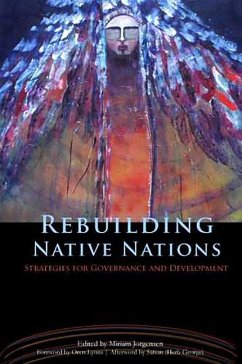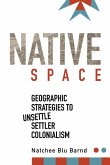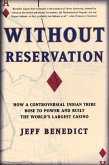A revolution is underway among the Indigenous nations of North America. It is a quiet revolution, largely unnoticed in society at large. But it is profoundly important. From the High Plains states and Prairie Provinces to the southwestern deserts, from Mississippi and Oklahoma to the northwest coast of the continent, Native peoples are reclaiming their right to govern themselves and to shape their future in their own ways. Challenging more than a century of colonial controls, they are addressing severe social problems, building sustainable economies, and reinvigorating Indigenous cultures. In effect, they are rebuilding their nations according to their own diverse and often innovative designs. Produced by the Native Nations Institute for Leadership, Management, and Policy at the University of Arizona and the Harvard Project on American Indian Economic Development, this book traces the contours of that revolution as Native nations turn the dream of self-determination into a practical reality. Part report, part analysis, part how-to manual for Native leaders, it discusses strategies for governance and community and economic development being employed by American Indian nations and First Nations in Canada as they move to assert greater control over their own affairs. Rebuilding Native Nations provides guidelines for creating new governance structures, rewriting constitutions, building justice systems, launching nation-owned enterprises, encouraging citizen entrepreneurs, developing new relationships with non-Native governments, and confronting the crippling legacies of colonialism. For nations that wish to join that revolution or for those who simply want to understand the transformation now underway across Indigenous North America, this book is a critical resource. CONTENTS Foreword by Oren Lyons > Part 1 > 1. Two Approaches to the Development of Native Nations: One Works, the Other Doesn't Stephen Cornell and Joseph P. Kalt 2. Development, Governance, Culture: What Are They and What Do They Have to Do with Rebuilding Native Nations? > Part 2 > 3. Remaking the Tools of Governance: Colonial Legacies, Indigenous Solutions Stephen Cornell 4. The Role of Constitutions in Native Nation Building: Laying a Firm Foundation Joseph P. Kalt 5 . Native Nation Courts: Key Players in Nation Rebuilding Joseph Thomas Flies-Away, Carrie Garrow, and Miriam Jorgensen 6. Getting Things Done for the Nation: The Challenge of Tribal Administration > Part 3 > 7. Managing the Boundary between Business and Politics: Strategies for Improving the Chances for Success in Tribally Owned Enterprises Kenneth Grant and Jonathan Taylor 8. Citizen Entrepreneurship: An Underutilized Development Resource Stephen Cornell, Miriam Jorgensen, Ian Wilson Record, and Joan Timeche 9. Governmental Services and Programs: Meeting Citizens' Needs Alyce S. Adams, Andrew J. Lee, and Michael Lipsky 10. Intergovernmental Relationships: Expressions of Tribal Sovereignty > Part 4 > 11. Rebuilding Native Nations: What Do Leaders Do? Manley A. Begay, Jr., Stephen Cornell, Miriam Jorgensen, and Nathan Pryor 12. Seizing the Future: Why Some Native Nations Do and Others Don't > Afterword by Satsan (Herb George) References About the Contributors Index








